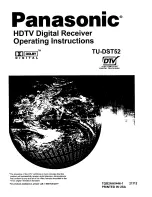
72
select
Fixed
. After choosing this option, you may set
the receiver to auto-calibrate the heading
computation. In this case keep the
Auto-Calibration
option enabled. Or you may prefer to disable this
option, in which case you will have to type in the exact
length of the baseline, in meters (in the
Vector Length
field).
–
If you think it may slightly vary over time (due to
support deformation, presence of wind, etc.), select
Changing (Flex)
. If you choose this option, no auto-
calibration is required.
• Enter the possible two offsets in relation to your antennas
installation (see
GNSS Antennas Setup for Heading
) as well as the maximum
expected vertical angle (
Max. Baseline Elevation
) the
baseline may present compared to the horizontal, and the
permitted tolerance on the baseline length (
Baseline
Tolerance
).
• Click
Configure
. The receiver starts operating in heading
mode.
Dual-RTK Rover
The SP90m may be configured to provide two RTK positions,
one per antenna. These results can subsequently be used to
compute the heading angle resulting from the orientation of
the two antennas, while providing an accurate position for
each of these two antennas.
On the receiver’s General Status screen, the receiver will
display “FIXED” (with short “FLOAT” transition time) when
computing a position in RTK mode for the primary antenna.
Press one of the vertical keys to see the computed position
for the primary antenna (marked
) and the secondary
antenna (marked
).
1
2
XYZ or
Lat-Lon-Height
Position
of primary
antenna
XYZ or
Lat-Lon-Height
Position
of secondary
antenna
One or two sets of corrections via:
• Internet (Ethernet, cellular modem, or WiFi) or
• UHF Radio
Содержание SP90m
Страница 1: ...User Guide SP90m GNSS Receiver From Firmware v3 61...
Страница 6: ......
Страница 12: ......
















































